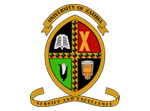Aquafeed formulation / edited by Sergio F. Nates.
Contributor(s): Nates, Sergio F [editor.].
Material type: BookPublisher: Amsterdam ; Boston : Elsevier/AP, Academic Press is an imprint of Elsevier [2016]Copyright date: ©2016Description: xxii, 279 pages : illustrations ; 24 cm.Content type: text Media type: unmediated Carrier type: volumeISBN: 9780128008737; 0128008733.Subject(s): Fishes -- Feeding and feeds | Fishes -- Nutrition | Shrimps -- Feeding and feeds | Shrimps -- Nutrition | Sustainable aquaculture | Fishes -- Feeding and feeds | Fishes -- Nutrition | Shrimps -- Feeding and feeds | Shrimps -- Nutrition | Sustainable aquaculture | AquakulturDDC classification: 333.95/6 Online resources: Publisher description Summary: Aquafeed Formulation is the only resource that provides summaries with examples and formulation techniques specifically to meet the needs of anyone in the aquaculture industry. As feed is the largest single cost item in aquaculture production, and formulating aquaculture feed requires many combinations of several ingredients and nutrient requirements, this book takes a clear and concise approach, providing essential information on formulation and covering relevant available software, feed nutrients, and additives such as enzymes and phytase and conjugated fatty acids, as well as best industry practices to improve aquafeed production. Users will find this to be a one-stop resource for anyone interested or involved in, the global aquaculture industry.-- Source other than Library of Congress.
BookPublisher: Amsterdam ; Boston : Elsevier/AP, Academic Press is an imprint of Elsevier [2016]Copyright date: ©2016Description: xxii, 279 pages : illustrations ; 24 cm.Content type: text Media type: unmediated Carrier type: volumeISBN: 9780128008737; 0128008733.Subject(s): Fishes -- Feeding and feeds | Fishes -- Nutrition | Shrimps -- Feeding and feeds | Shrimps -- Nutrition | Sustainable aquaculture | Fishes -- Feeding and feeds | Fishes -- Nutrition | Shrimps -- Feeding and feeds | Shrimps -- Nutrition | Sustainable aquaculture | AquakulturDDC classification: 333.95/6 Online resources: Publisher description Summary: Aquafeed Formulation is the only resource that provides summaries with examples and formulation techniques specifically to meet the needs of anyone in the aquaculture industry. As feed is the largest single cost item in aquaculture production, and formulating aquaculture feed requires many combinations of several ingredients and nutrient requirements, this book takes a clear and concise approach, providing essential information on formulation and covering relevant available software, feed nutrients, and additives such as enzymes and phytase and conjugated fatty acids, as well as best industry practices to improve aquafeed production. Users will find this to be a one-stop resource for anyone interested or involved in, the global aquaculture industry.-- Source other than Library of Congress.
Includes bibliographical references and index.
Aquafeed Formulation is the only resource that provides summaries with examples and formulation techniques specifically to meet the needs of anyone in the aquaculture industry. As feed is the largest single cost item in aquaculture production, and formulating aquaculture feed requires many combinations of several ingredients and nutrient requirements, this book takes a clear and concise approach, providing essential information on formulation and covering relevant available software, feed nutrients, and additives such as enzymes and phytase and conjugated fatty acids, as well as best industry practices to improve aquafeed production. Users will find this to be a one-stop resource for anyone interested or involved in, the global aquaculture industry.-- Source other than Library of Congress.
 University Of Zambia Online Public Access Catalogue
University Of Zambia Online Public Access Catalogue

There are no comments for this item.